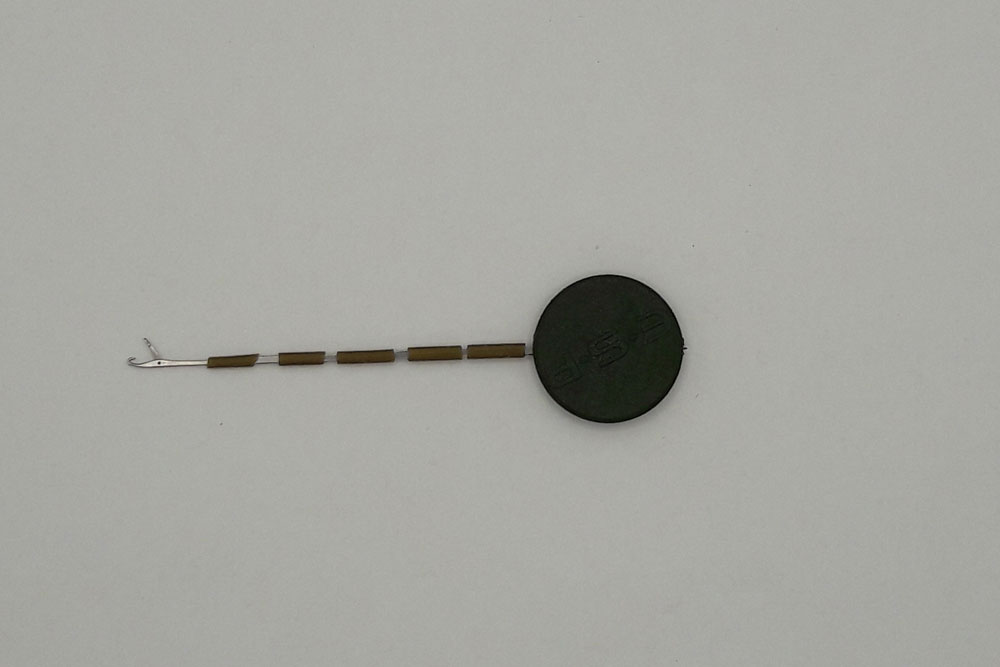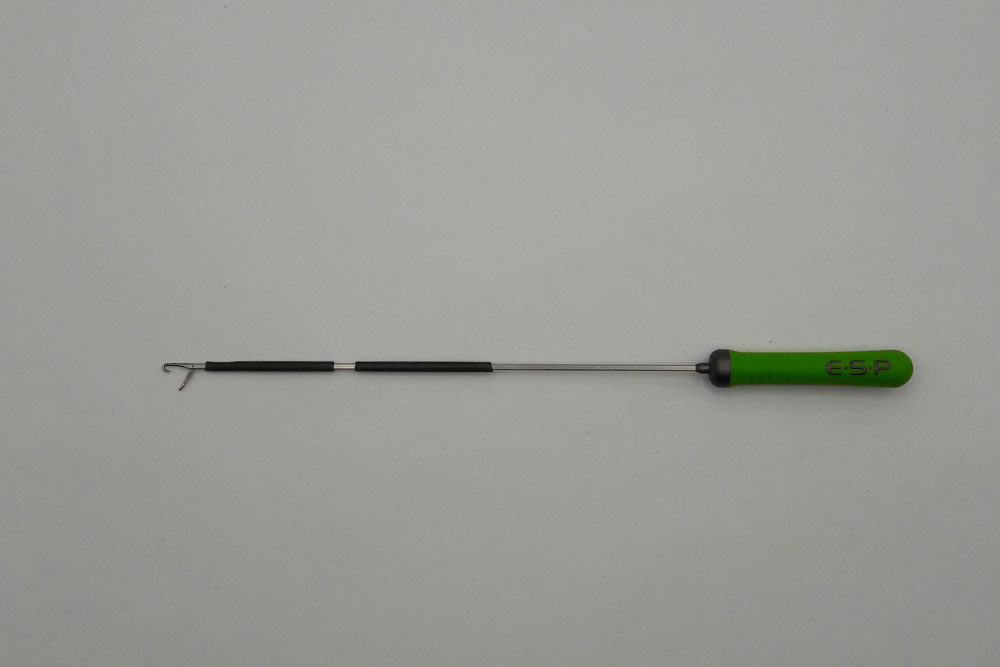Splicing Needles
Splicing needles are just for specimen anglers and Leadcore use – right? No, not exclusively. Even match anglers can benefit from having a couple of small splicing needles in the tackle box and even the extra long stick type.
I always keep at least two (in case I drop one!) in the cross drawer of my seat box. They are pre-threaded with very fine (so about 0.25/0.30mm bore) silicone tubing. For me, this has some good uses.

Trap Shotting Wagglers
Mostly I’d use loaded and only need two or three No 8 or even float stops around the float. But occasionally a larger shot for an unloaded float get used, such as BB, AAA, or even SSG. Because these larger shot are made from a non-toxic alloy, they are much harder than lead. If squeezed onto the line so that they grip sufficiently, it risks compressing the line, damaging it and causing a weak spot. Furthermore, it makes moving the float up and down more of a chore. Therefore, threading a section of silicone tube onto the line above and below the float cushions these hard shot, protects the line and allows the float to be moved easier & quicker. Threading these pieces of silicone when setting up is much easier when a splicing needle is used, as you can hold the line in the crook and just slide a piece off and on in a couple of seconds.
Backshotting
The other main use for me is backshotting. Occasionally, the back shot needed can be big, a No 4 or a BB for example, and therefore a hard alloy shot. It won’t be attached to the rig when it is first made but added at the start of or during the day. Like adding silicone to cushion trap shot, it’s nicer to place silicone onto the line to protect it. So here it’s a case of putting the crook of the splicing needle into the top loop of the rig and sliding a piece off and down to wherever you want it to be. If you are doing this during a session, it is MUCH quicker and easier than trying to thread the silicone without a needle and better than cutting off the top loop to thread and retying the loop.
Bulk Shot on Big Floats
A third use is for bulk shot on big floats (so maybe a slider, a big Avon, a Flat Float etc.) which will also be hard alloy shot. You can thread on a longer length sufficient for say three or four shot in a line when making up the rig. Olivettes are superb for making bulks, but don’t offer the flexibility of larger shots if a lighter float/rig is needed. A rig with an Olivette is likely to be made up exactly, and so needing to use a lighter float or significantly less weight during a session will mean taking off that rig and changing it completely. Every so often, it’s easier and quicker to adjust what you have in use already.
Whip Rigs
And a fourth use is for keeping longer lengths (say 30mm) ready threaded for use with whip rigs.

I could have whip rigs made up, each with a long length of silicone at the end, ready to go. But occasionally, I want to use a rig – for whatever reason – which I didn’t specifically make up for whip fishing. Purpose made whip rigs are made up with the typical twin loops at the end of the line. This enables them to be attached to the whip by lassoing the line behind another short section of silicone (say 8mm) which is kept pre-threaded up the solid flick tip of the whip. This second longer length of silicone is threaded onto the tip after the rig line is wrapped around or twisted around the flick tip many times (maybe 30). Because of the multiple wrappings, any force exerted on the rig line is not fully transferred to the line held behind the short 8mm of silicone, and so the line there is not in any danger of coming adrift. I have never, ever had a rig come off or even look close to detaching itself using this set-up. Having some long lengths of silicone pre-threaded onto XL Splicing needles means I can convert any of my rigs into a whip rig with no messing about.
